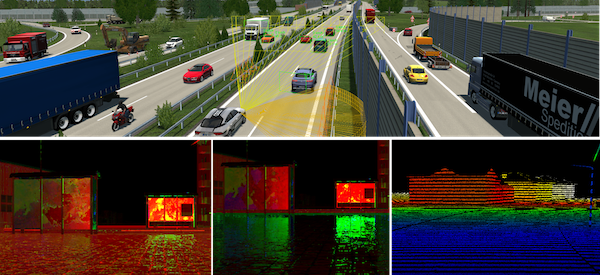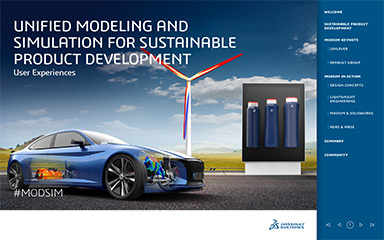MSC Brings New Realism to Virtual Test Drives
The new Adams-ready VTD integrates vehicle dynamics into virtual test drives, allowing for more accurate simulations.

Adams-ready VTD combines vehicle dynamics and virtual test drive simulation to accelerate development of next-generation ADAS and autonomous vehicles. Image courtesy of MSC Software.
Latest News
January 27, 2020
MSC Software is pairing two essential ingredients designed to accelerate safe autonomous vehicle development: The ability to virtually test drive new offerings in realistic road environments along with the ability to accurately simulate vehicle dynamics.
The new Adams-ready VTD offering combines the leading vehicle dynamics capabilities with the Hexagon Manufacturing Intelligence division’s virtual test drive (VTD) simulation platform, designed to help engineering teams test and build advanced driver assistance systems (ADAS) and autonomous vehicles.
Automotive manufacturers have long validated vehicle dynamics models with road tests to understand their movement and handling—with this latest announcement, MSC Software has tapped an open interface to sync up the Adams simulation capabilities with its VTD platform, making it possible to drive vehicles in simulated road conditions.
“Our VTD already has all the features and functions needed to simulate sensors, traffic, and environmental conditions like the weather,” explains Luca Castignani, automotive strategist at MSC Software. “Now we’re bringing another ingredient into the recipe to deliver more accuracy.”
With this new capability, engineers can simulate a vehicle’s behavior in certain extreme circumstances—for example, determining the physical limits of a vehicle on certain road conditions like a hill, including whether it will skid or roll, and allowing the design engineers to evaluate the best course of action. Consider another example where a vehicle might be riding on a rough road: Adams-ready VTD could be used to determine how vibrations might impact suspension or the vehicle bus as sensors are being shaken.

“This was not able to be tested with the prior version of VTD,” Castignani explains. “It would assume you were running the vehicle on a flat road, and VTD wasn’t able to compute the propagation of the vibration from the road to the sensor.” The ability to do so brings more accuracy to the virtual test drive. “If you can account for real-world conditions, maybe making a hard brake is not the best course of action,” he explains. “By simulating the conditions of the environment, not a lab, you have a more realistic effect of the environment on the vehicle.”
In the end, the combination of Adams simulation software and the MSC VTD environment will help improve confidence in robust test cases and most importantly, in the decisions made to ensure the safe operation of ADAS and autonomous systems. “With Adams-ready VTD, we’ve brought software development and automotive engineering together so the industry can move from `what should the vehicle do?’ to `can the vehicle cope with this command?,’” Castignani says.
This webinar provides a deep dive into the Adams VTD coupling.
More Hexagon MSC Software Coverage
Subscribe to our FREE magazine, FREE email newsletters or both!
Latest News
About the Author
Beth Stackpole is a contributing editor to Digital Engineering. Send e-mail about this article to DE-Editors@digitaleng.news.
Follow DE





